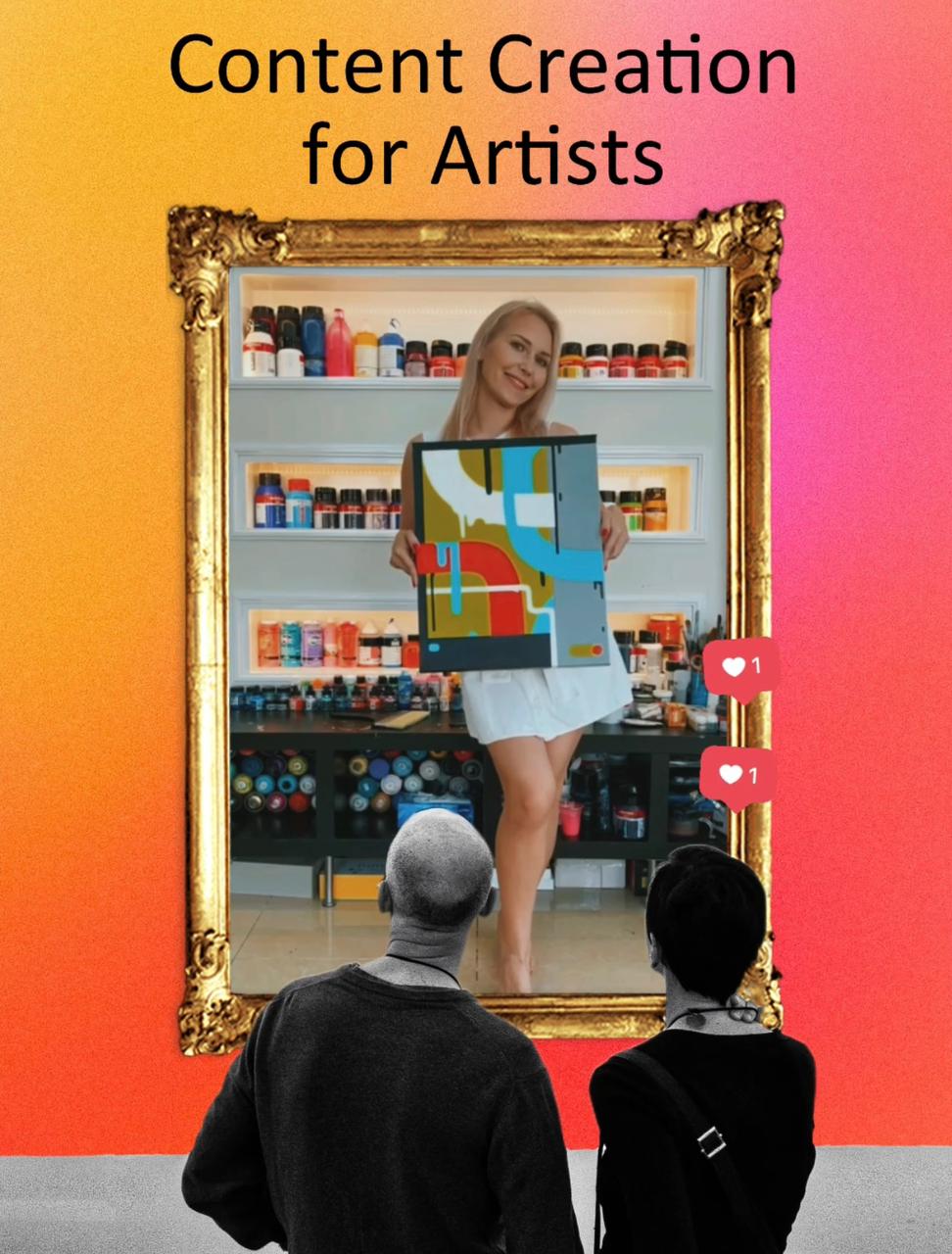Participating in an art fair or running your own art exhibition is definitely one of the most exciting parts of an artists’s career. Art exhibitions are a great opportunity to network, grow a data base of potential art collectors, build contacts with media and make sales. In this article I would like to share some tips that will help you make a clear strategy on making the most of your art exhibition.

1. Collect contacts to build your data base of potential clients
At each art exhibition, bring a beautiful notebook where visitors can write you a pleasant review and leave their contacts to receive news from you. Gather this information carefully – it is your loyal audience.
You can also run a giveaway competition in order to collect business cards of your visitors, in that case you can use a glass bowl that you leave at the front desk.
2. Inform your collectors
Be sure to send information about the upcoming art exhibition well in advance to all your loyal followers, as well as collectors and buyers. If the host has provided you with electronic invitations, attach them to your newsletter.
It also makes sense to send a What;s App message for your closer contacts and a printed invite for more important guests. Printed invites or tickets are a great marketing tool as people enjoy taking photos of them and sharing on social media.

3. Create visibility by working close with local media
Notify art related publications about your art exhibition in advance. Browse your local print and digital press as well as other media channels to identify who could be interested in covering your story. Get in touch, introduce yourself and send an invite flyer, a press release and/or your profile (should feature both the artist bio and artist statement) , some images of you and the artwork and any other related information. You could also mention you are available for in-person or online interviews and mention the dates.
Keep in mind that some magazines and newspapers will be happy to cover your exhibition for free if they like your artwork and your story and it fits their style while others will offer you their rate cards. You have to consider if it is worth being featured on a paid basis based on factors like how popular the magazine or newspaper is, what’s the rotation, how many readers/followers it has on social media and how being featured by it will help you strengthen your brand and marker your work better.

4. Maintain a good relationship with the art curator or the organizer of the art fair.
The art curator or art fair organizer has connections with the press and media. Ask him or her for their assistance. Many organizers have an additional paid service to promote a participant during an exhibition. Consider this possibility in terms of expense and press coverage. It might be a good offer to consider as a part of your marketing strategy.

5. Improve your social media game
Before, during and after an art exhibition, your social media channels should be extremely informative and you have to be ready to interact with the potential buyer. Make sure you provide all the related information about you, your artwork, collectors’ reviews and ways of getting in touch (emails, whats app, appointment). Nothing extra. Leave photos of your favourite pets and parties for a personal account.
6. Invest in paid ads
How can you gain more exposure? Targeted advertising on social networks, as well as advertising leading to your website, is an excellent way to promote yourself and your upcoming art exhibition. However, it is important to understand how to set it up. This task can be delegated to a professional, but you must know how it works and the result you want. What is the cost of a click, the cost of an attracted subscriber, the cost of a lead, the results of the A/B testing ? These are essential questions that you must know the answers to, and you should ask a targeting specialist about the results. Pay attention to the customization of the targeted advertising so that your budget would not be wasted, leaving you without results.
Ideally, you should have a clear understanding of who your target audience is including demographic(location, gender, age) and psychographic(interested, needs) factors.

7. Invest in promo materials
Think of creating both printed and digital brochures. Not all buyers are ready to purchase artwork at the exhibition. Many people need time to consult with family and friends before making the decision. Have a customer-friendly form of your catalog, which would provide information about your artworks, their characteristics, price and ways of contacting you.
I hope this information helps you to prepare better for your upcoming art exhibition. Not all of these points come with a high cost. Paid publishing or advertising does and is easier to organise. However, the more extensive your network of contacts is and the earlier you start working on building your network and client database, the lower the cost of your advertising integrations will be. If you do everything correctly, you will have requests for purchases as well as first sales even before the exhibition starts.
Stay inspired and best of luck,
Julia Smolenkova
To learn more about branding,social media management, marketing and selling art, join the Artist Boot Camp 2.0



